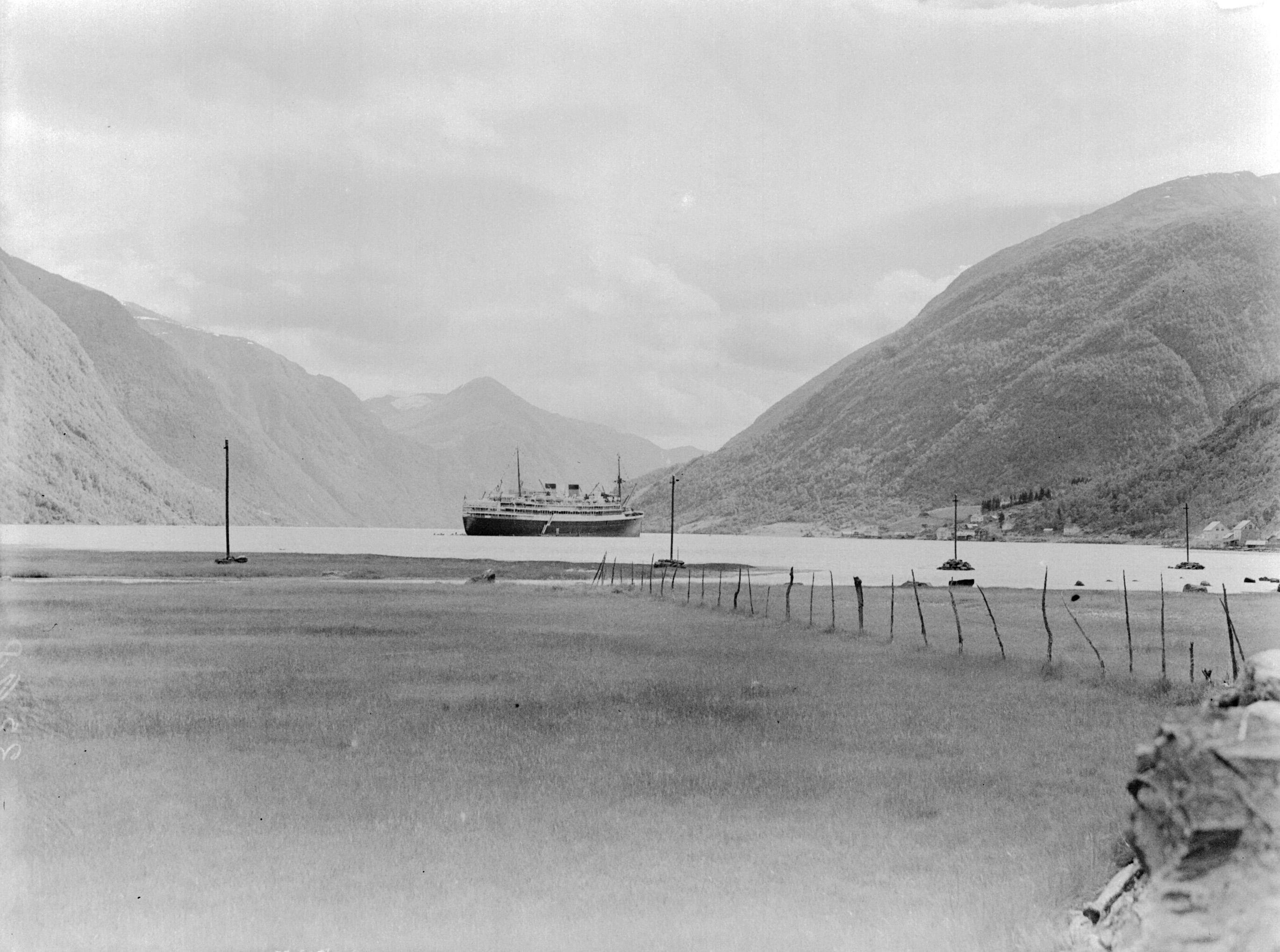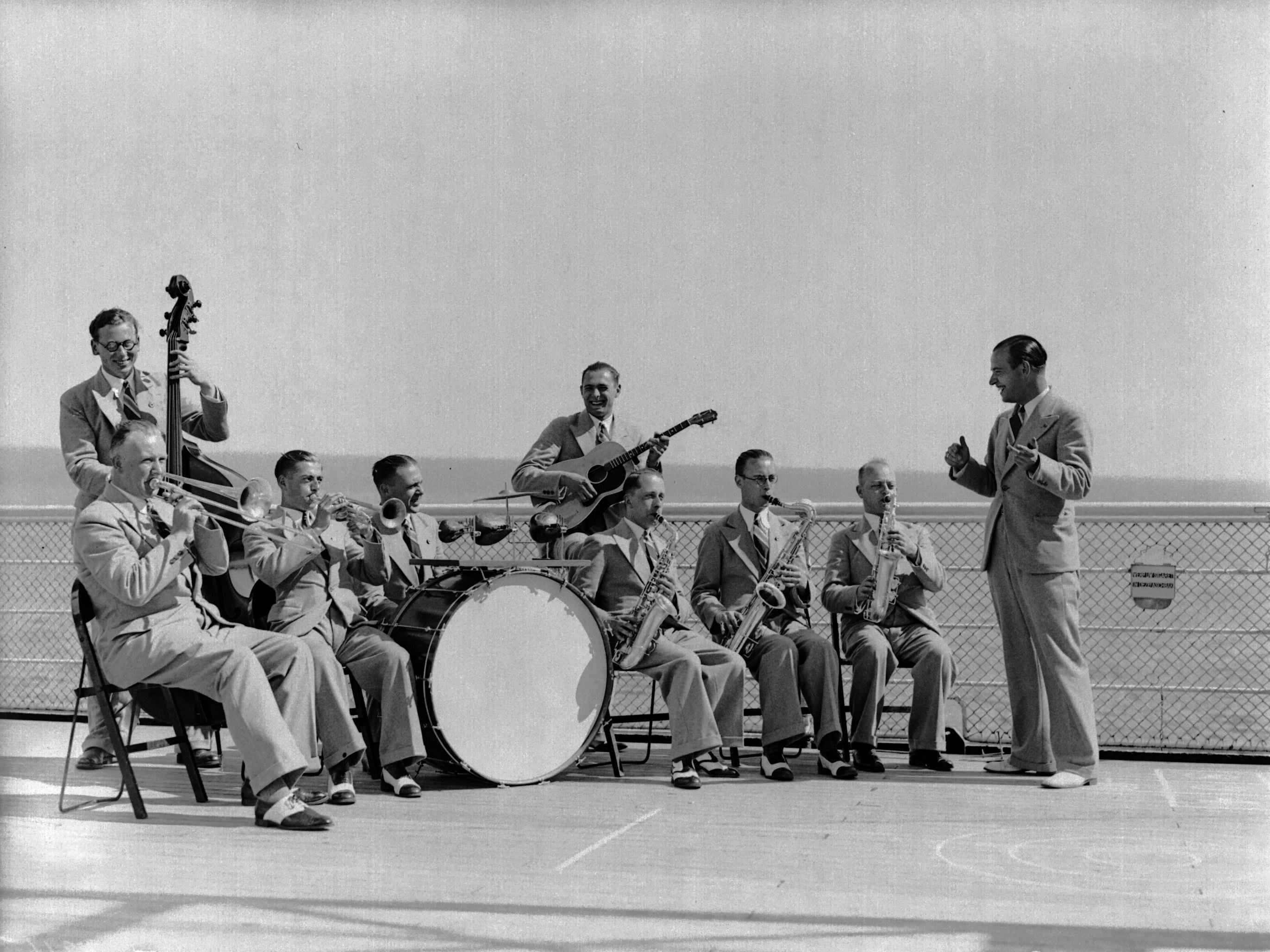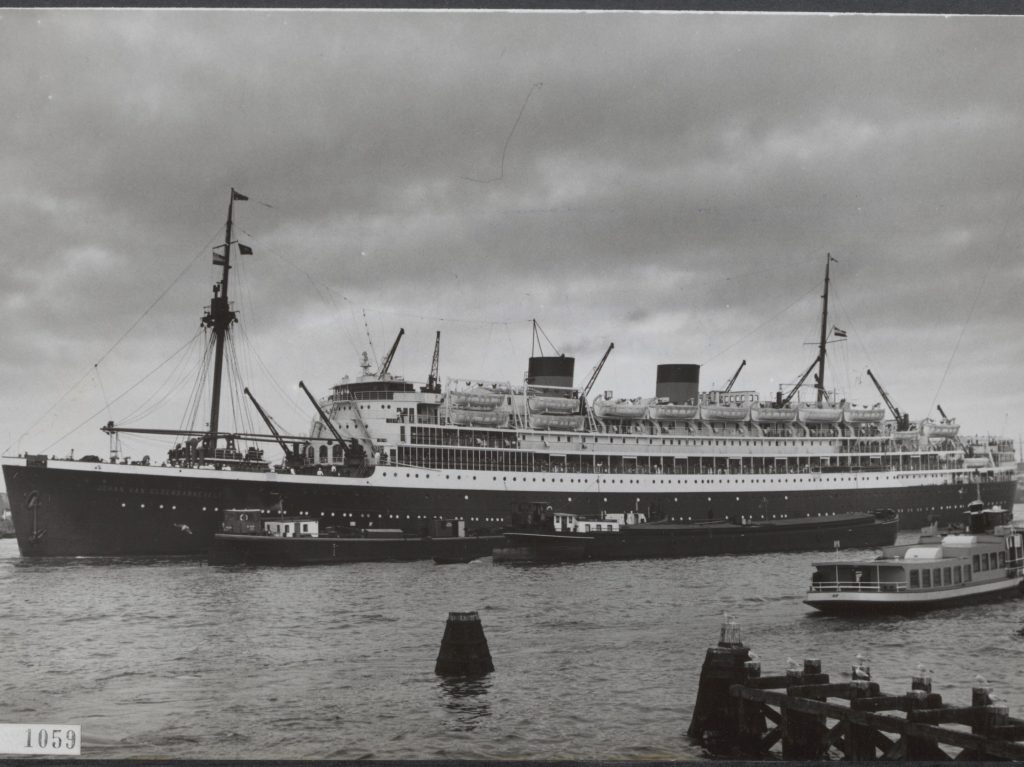One of the best things about working with archival material is the stories that exist around certain sounds, images or videos. Content maybe be king in today’s age but context is the crown. We want to polish that crown.
The video for Swarm Intelligence’s “NDSM Werf” showed scenes of ships being launched at the old NDSM Werf located in Amsterdam Noord. The wharf was one of the biggest shipyards of its time, and had a long life, lasting from 1894 to 1979. Hundreds of ships were built at NDSM and while the video stops with a Shell tanker being taken out to sea the story for these seafaring vessels does not end there. Like a baby turtle running from shore to the sea, the open ocean is where things get interesting and perhaps no story is more infamous than that of the Johan van Oldenbarnevelt.

In December 1963, after a busy schedule and heavy maintenance from April-November the Lakonia set off for a Christmas cruise. 3 days into the voyage on December 22nd around 10:00 PM smoke started permeating the Lakonia from the luxury hair salon on board. The smoke was ignored by many as either being part of one of the shows going on or heavy cigar smoke from the smoking room. It was Christmas time and the ship was in full entertainment swing that night, the jovial vibe wasn’t going to be dissuaded by a bit of smoke. But by the time the crew realized a fire had broken out, containing the blaze was out of the question.
This is when things went down hill. The alarms sounded but were regarded as being too quiet to cause any alarm or notification that an emergency was upon the doomed vessel. The intercom system had been rendered useless by the spreading flames which resulted in crew members having to manually inform the 600+ passengers on board that they had to evacuate. Some asleep in the lower decks never got the message. Investigations following the disaster as well as first hand accounts heavily criticized the crew for abandoning ship, taking priority over life boats and being utterly useless and the lack of order and direction led to chaos. The ship’s emergency life boats which had only a week prior been tested and approved where attached to rusty and old lowering mechanisms. Life boats couldn’t be lowered or they had to be cut, capsizing when they hit the water. Passengers in the lower desks were trapped in their rooms along with a number of passengers in the glass enclosed shopping area, the Agora. Many jumped overboard dying or being wounded on their way to open ocean. From their they suffered from exposure to elements or couldn’t swim.
2 weeks after the event Time Magazine reported on the events as such:
On board the Lakonia, the nightmare was all too real. With the loudspeaker system not operating, there was near-anarchy on deck. Officers issued contradictory instructions, and crewmen milled around unsure of what to do. Screams filled the air in half a dozen different languages. Unable to comprehend the crew’s cries, passengers took charge of small groups and tried to lead them through the thick smoke to their boat stations. Pressed against the rail were scores of passengers in every variety of dress—nightgowns, pajamas, tramp costumes and evening clothes.
At 12:22am a S.O.S. was sent by Captain Zarbis. Rescue planes were scrambled and ships in the vicinity of the doomed Lakonia were redirected to the area. By morning a fleet of 20 ships came to the rescue of the Lakonia, plucking survivors and bodies out of the sea. The last survivor rescued off the Lakonia was Captain Zarbis. 128 people lost their lives.
The smoldering wreckage was to be towed back to land but due to poor weather conditions the ship listed and eventually sank en route to port.
Reading accounts from survivors of the disaster one can’t help but feel confused and claustrophobic. Mixed messages and poor communication from the crew did no favors for those like one gentleman who assumed the fires would be put out so he just went to the only bar on board still open and enjoyed a few cocktails while others were scrambling for lifeboats. The fire could have been easily prevented or better managed but alas, several crew members including the captain where charged with gross negligence. Many first-hand survivor accounts praise the leadership capabilities of other passengers who took control when it was obvious many crew members were not going to help.

Watching the footage of the Johan van Oldenbarnevelt’s launch and voyage out to sea, it’s hard to imagine the ship’s ultimate fate. Personal accounts from passengers who enjoyed the JvO during its heyday refer to it as a majestic time and fine ship with an astounding Dutch crew. Forums about the JvO are still active to this day, with passengers reminiscing about the wonderful trips they had aboard the Dutch vessel. Nothing gold can stay though and the ship with six lives was bound to catch a bad break eventually.
We’re sure there are more interesting stories about other ships built at NDSM but this was one that really stood out. The JvO meant a lot to a lot of people and now its laying at the bottom of the sea off the coast of Casablanca.
So give “NDSM Werf” a listen with this new knowledge in mind and remember there’s always more to a sound than what you hear.
